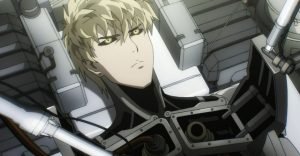The Source Wall: DC’s Mysterious Edge of the Universe Explained

For those living in the world of DC Comics, the last several years have been complete chaos. From Nightmare Batmen to the goddess of doom herself, the Multiverse has never been in greater danger than right now, thanks in great part to beloved writer Scott Snyder. And all these interstellar threats to the fabric of existence originate from one place–the edge of the universe, otherwise known as the Source Wall.
Created by Jack Kirby, one of the most prolific figures in all of comics history, the Source Wall was first conceived in New Gods #5 in 1971. It was originally described as a mystical barrier between the universe and the Source–the unknown cosmos beyond reality where the answers to life’s greatest questions can be found. Throughout DC’s long publishing history, this monument to the great unknown has served as a centerpiece for many of their biggest and grandest storylines.
For those not familiar with Jack Kirby, the famed writer/artist is one of the founding fathers of Marvel Comics, responsible for creating many of their most popular characters. When he switched over to DC, his first home run for the company was creating the Fourth World–a society of godlike beings who can easily go toe-to-toe with Superman. Among these beings is the all-powerful space dictator Darkseid, who has always had an obsession with harnessing the power beyond the Source Wall, specifically the Anti-Life Equation.

Though its origins have changed and fluctuated with each continuity reboot, the Wall’s purpose has more or less remained constant. In its original conception Kirby described it not as a physical barrier, but more like a nebulous membrane cluttered with the fossilized remains of colossal beings known as Promethean Giants (named after the remote galaxy that serves as its closest waypoint). These monstrous humanoids serve as a deterrent to those hoping to break through the metaphysical barrier and unlock the mysteries beyond.
Interestingly, it was a DC/Marvel crossover series between the New Teen Titans and the Uncanny X-Men that conceptualized the Source Wall as a literal wall in space. The Promethean Giants, who originally just free-floated in space, now served as mortar for the wall itself like hideous statues. Since then, the Wall has either been depicted as a giant ring around the universe or like the inner lining of a giant sphere.
So what strange forces reside beyond the wall? In Grant Morrison’s Final Crisis, each of DC’s 52 universes have their own Source Wall, which collectively act as a buffer between realities. In the dramatic finale episode of Justice League Unlimited, writer Dwayne McDuffie has Lex Luthor travel beyond the wall (with the help of the New God Metron) in hopes of finding a way to defeat Darkseid. Due to Luthor’s extreme intelligence, he narrowly survives his journey and returns to Earth holding the one prize that has always eluded the lord of Apokolips–the Anti-life Equation.
In Death of the New Gods by Jim Starlin, Metron learns that the Source Wall was created as a consequence to the events of Crisis on Infinite Earths and served as a type of dam against Anti-Life; the “dark side” of the divine Source. In New 52 canon, the Source Wall is said to separate the Multiverse from the essence of life–the energy source that powers the rings of the White Lanterns.

More recently, Scott Snyder has made the Source Wall a focal point to his over-arching storyline in the ongoing Justice League comics as well his miniseries Dark Nights: Metal, Justice League: No Justice and most recently in Dark Nights: Death Metal. Snyder’s version of reality’s Great Wall is far more sinister than it’s previous incarnations; secretly hiding the greatest threat to all life since the dawn of our universe. Though many self-styled gods and titans have attempted to breach the Source Wall, it wasn’t until recently that the impossible finally happened–the cosmic barrier crumbles into pieces.
The story spans years deep into Snyder’s work, starting with Dark Nights: Metal. When the bat-god Barbatos invaded Earth with a court of twisted Dark Knights (seemingly demonic versions of Bruce Wayne), the Justice League harnessed the power of Element X (the reality-bending substance found within the Forge of Worlds) and cast the dark entity out of their universe before he could drag all of reality into the Dark Multiverse. Though the Justice League came out on top, their overzealous attack on Barbatos also punctured a hole in the Source Wall. Just like Pandora’s Box, the breach in the cosmic structure leaked out a plague of ancient, dark forces. Aquaman says it best: “Our universe, the whole thing… is like a tiny fishbowl. That just got poured into the damn ocean.”
Scott Snyder claimed at the time that he broke the Source Wall in honor of Jack Kirby’s 100th birthday, wanting to pay tribute to the spirit and energy of his work. And true to his word, he followed up the events of Dark Nights: Metal with his heavily Kirby-inspired limited series Justice League: No Justice. Not long after punching through the Source Wall, Earth receives a visit from the world collector Brainiac, who informs the Justice League that four massive world-feasting entities known as Omega Titans climbed out of the breach and were threatening to devour his homeworld of Colu.

In response to the threat, Brainiac created four teams comprised of both heroes and villains–each strike force embodying one of the fundamental energies of sentient life. Though they were unable to save Colu, the four teams were able to spare Earth from the same fate by tricking three of the colossi into consuming the fourth. With their energy reserves restored, the remaining Omega Titans return to the Source Wall in the final issue.
Though the Omega Titans seem villainous at first (as they share some resemblances to Kirby’s planet-eating Marvel character Galactus), they are revealed to be a necessary evil in keeping the integrity of the Source Wall intact. Furthermore, it’s revealed that the true purpose of the cosmic barrier isn’t solely to repel Anti-Life, but also a whole other slew of “crisisenergies,” otherwise known as the Seven Hidden Energies or the forces of doom.
Eons ago these metaphysical forces, which are dark reflections of the Seven Harmonious Forces that power several of Earth’s heroes, were banished beyond the wall along with the Multiverse’s own creator, the corrupted goddess Perpetua. Despite her imprisonment within the Totality, a cage built with the oldest energy source in existence, the fallen celestial quickly took advantage of the break in the Source Wall to plot her escape into the Multiverse.
In the pages of Justice League Annual #1, Earth’s defenders team up with the New Gods, the Green Lantern Corps., and the Thanagarian Empire to assist the newly refueled Omega Titans in repairing the leak in the Source Wall. Unfortunately, with one of the Omega Titans destroyed (and the Legion of Doom launching a sneak-attack), the plan fails horribly and the whole structure collapses. What was once a leak in the dam becomes an open flood gate releasing literal doom onto the universe. In the shocking conclusion to Justice League #39, Perpetua actually erases the Justice League from existence.

This cosmic catastrophe is also the main centerpiece in the series Justice League: Odyssey, where a recently reborn Darkseid gathers artifacts to build a massive space arc, known as Sepulkore, to ride out the oncoming cosmic rapture. Long story short, the Source Wall cracking is basically the biggest event to ever rock the DC Multiverse since Crisis on Infinite Earths merged dozens of separate timelines into one continuity.
Currently, Perpetua and her Dark Knight disciples are annihilating the Multiverse one Earth at a time in Scott Snyder and Greg Capullo’s self-described “encore” performance cheekily titled Dark Nights: Death Metal. Her envoy, the Batman Who Laughs, just fused with a Bruce Wayne version of Dr. Manhattan (yes, the Watchmen character) and now has the ability to warp reality as the newly dubbed “Darkest Knight.” It doesn’t take a magic 8-ball to know that the outlet is not so good for the few surviving members of the Justice League.
In an emotional scene between Batman and Wonder Woman in issue #2 of Death Metal, the Caped Crusader confesses that he personally blames himself for the destruction of the Source Wall—his actions in Dark Nights: Metal being the first domino to fall in a series of events that have effectively doomed the Multiverse. Though it is unlikely that the forces of chaos will win forever, like Geoff Johns’ Flashpoint series in 2011, Snyder’s brazen destruction of the border to all reality has created a mega crisis that will likely change DC Comics for years to come.
About The Author


















